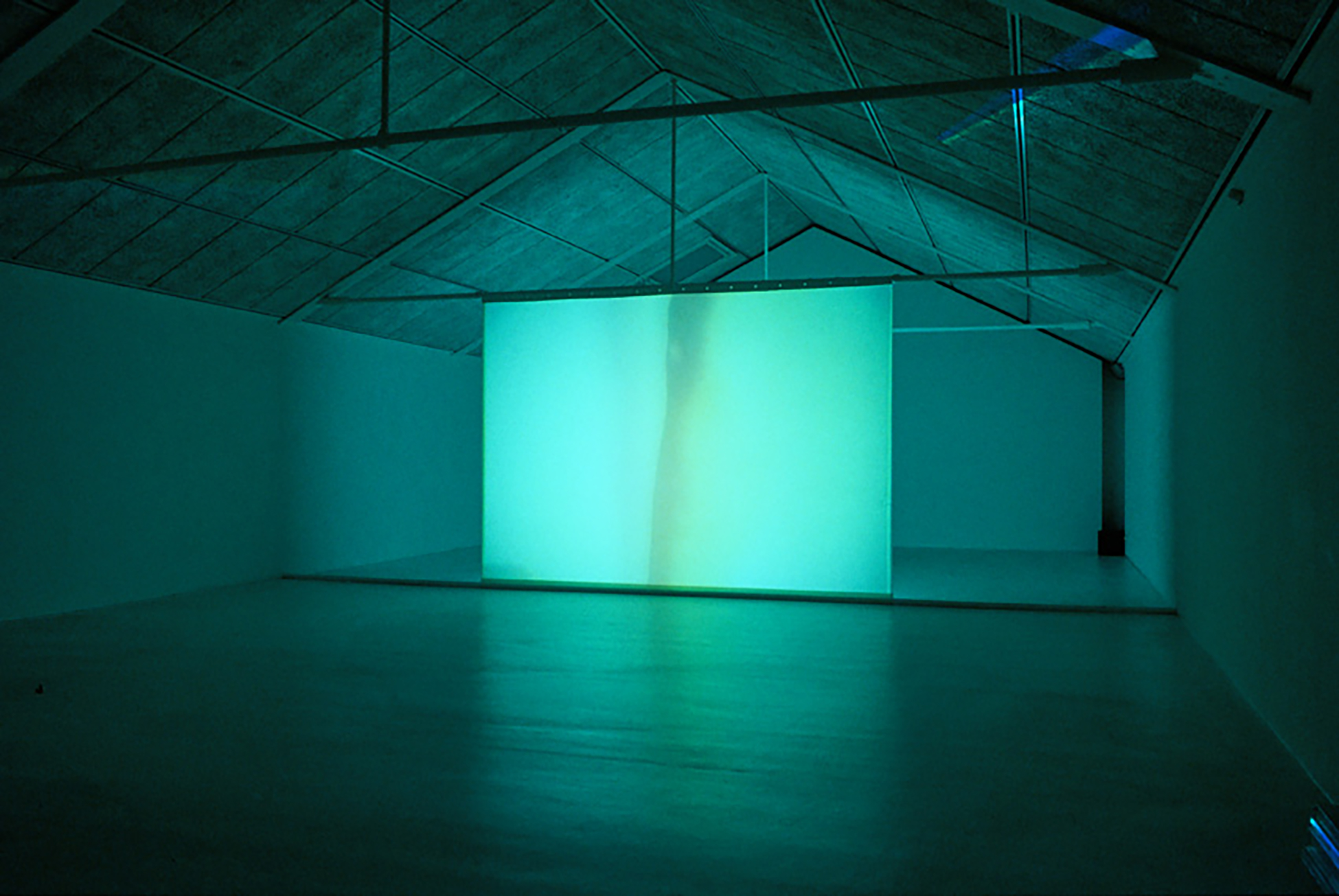white out
The floor in the exhibition space is painted white, the video is projected on to a screen in the middle of the room and can be seen from both sides. The images can also be seen reflected in the floor. The video imagery show projected light moving alongside parts of my body, and through a digital process edited and changed into a slow, strange, rythmical sequence. The viewer can move freely around the work which has a seven min. long video loop, with four short sound sequences coming in on different intervals, the sound moving diagonally from one corner of the gallery to the other. In “White Out” I was interested in the movement and quality of the unphysical white light in connection with how we perceive .
WHITE OUT Galleri RAM 1996
Video as painting, or the other way around.
Tone Myskjas videoinstallation indicates how short the distance between painting and video can be.
The big advantage with video is that it can be several things at one and the same time;
A flat picture, or an object that moves. A progress in time or a stagnant electronic vibration. The dream of dynamic paintings, that means paintings that moves, that are making a space for themselves or do something with the space they exists in, is not new. It has its roots back in the beginning of modernism and has been a frequent theme for painting since that time.
Tone Myskja`s big videoinstallation in Galleri RAM shows how short the distance between painting and video can be, how video on one level just continues - or make real - a dream many earlier isms carried within themselves.
Malevich
I am thinking of e.g. Kasimir Malevich suprematism: Malevich was imagening a transition from manuell painting to electronic light effects, coloured light effects on a white surface. As a starting point he painted just that; a white square.
Coloured light effects on a white surface: The connection in history becomes clear since Myskja is not using TV-monitors, but are projecting pictures on a big stretched canvas in the middle of the room. As a painting, only that it moves. As a painting, only that you can walk around it and see the same movement from behind, at the same time as the videolight is making a mirrored reflection in the floor.
It could have been a white monochrome: the white surface is at any rate the bases. But white is, as known, never only white - it is the colour that consists of all the other colours put together. It is a kind of meta-colour that at one and the same time is all colours and no colour - in similarity with video that is pure light. And in resemblance with Malevichs white painting implies video as pure light a kind of zero positioning of the image, a tuning in on a new wavelenght, where all possibilities are open. Because when the white light begins to move - by example to be filtered through a prism or like here through an electronic apparatus - other colours starts appearing. On the screen there appear fainted layers of colour that are making fissures in the white. And the sound of a tone from a cello is making a corresponding fissure in the"white" silence of the gallery.
In an electronic world light and sound are connected - the only thing separating them, is a difference in frequency. And if the earlier modernism dreamed of that kind of connection, claiming that colour could "express" sound, this dream is now concretized. What kind of sound would Malevichs white painting have expressed ? "White Out" indicate that the sound would have cracked up the white and uncovered the colours and movement that is hidden in the pure light.
Ina Blom Aftenposten 1996
white out
Video and soundinstallation
RAM Galleri Oslo 1996.
Video, edit, director, performer Tone Myskja
Sound design by Jon Balke.
